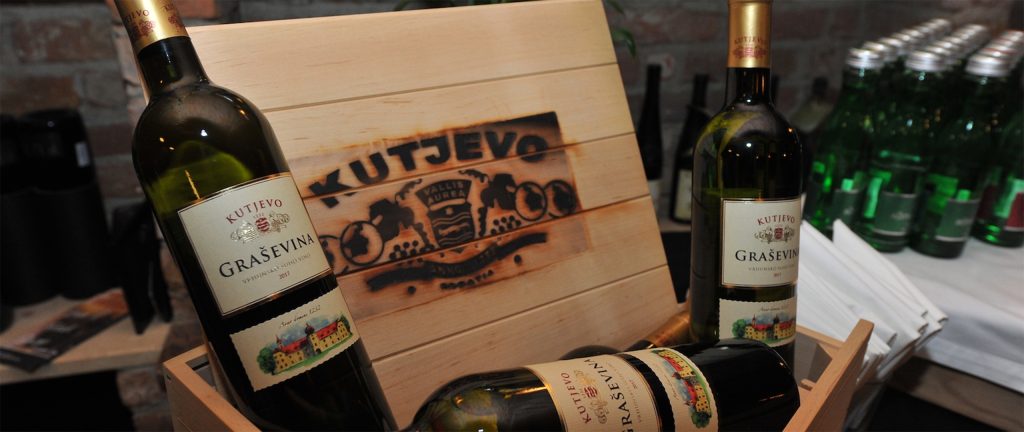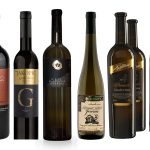Written by Saša Špiranec
In Hungary it is one of the most common choices among white wines, in Serbia it is the most represented variety in surface area just like in Croatia, in Slovenia, Czech Republic and Slovakia it is either at the top or near it. However, nowhere is it grown in quantity or with equal passion as in Croatia, as the Austrian national pride is the Veltliner, for Hungarians the Furmint, Prokupac and Tamjanika for the Serbs, Šipon and Rebula for the Slovenes and so on.
Graševina in Croatia, besides being the leading variety, also has a stunning 23% share in vineyards, climbing to 30% in wine production (due to smaller yield in Dalmatian vineyards where it is not grown), which finally comes down to 24 to 26% of market share, depending on the year. Therefore, every fourth bottle of wine consumed by Croats and their guests during a single year is a Graševina. Such a market share can only be seen with the Riesling in Germany.
The love of Croats and Graševina was not always so open. Wines made from it used to be called regular, common, consumed mostly at home, while special occasions used to call for other varieties, especially international ones.
As this trend of fascination with something one cannot pronounce (in terms of wine) is behind us for quite some years, so has the love for Graševina ceased being a secret. Today there isn’t an oenologically literate restaurant which doesn’t offer several labels of this wine. In the past two decades Graševina has been profiled in four main style groups.
The first are dry and fresh wines, usually from last year’s harvest meant for quick consumption. With mostly moderate alcohols, fruit profile aromas, fermented and ripened in stainless steel, cooled to preserve freshness. Typical examples are superior Graševinas from Orahovica or Belje. The second group are Graševinas harvested somewhat later, a week or three, the time it takes for the riper flower aromas to develop, sometimes with botrytis notes. These are wines which ripen perfectly in the bottle, more scented and softer, riper and warmer, sometimes marked as late harvest, sometimes not and are usually dry or semi-dry.
Typical examples are Enjingi and Krauthaker Mitrovac. The third group is rather new, with Graševinas ripened in wooden barrels or various sizes and with varying air access, aged a few years before the market release, and due to a certain complexity their most common use is to go with food. A typical example is the Velika Berba of Ilok Cellars.
The fourth group are dessert wines gained through the drying of grapes in the vineyard, on vines or even freezing of the grapes in case of ice harvests. In this group of dessert wines Graševina is in good harvests able to produce some of the best predicates in the world. A typical example are all predicate Graševinas of Kutjevo, from later to ice harvests. In the past years Graševina has also received a line of international awards for quality.
At competitions such as IWC and DWWE in London Graševinas repeatedly received 90 points or more, some even gold and platinum medals of 95 to 100 points. The last such success was by Jasna Antunović Turk last year with her Premium Graševina 2013. This time we recommend three Graševinas currently on the market which are a good investment today and can be left to age for a longer time.
KRAUTHAKER GRAŠEVINA MITROVAC 2016
A year ago we witnessed a vertical tasting of Graševina Mitrovac from the past ten years and were convinced it is one of the rare domestic white wines which are able to age a full decade. The 2016 Mitrovac is one of the best Krauthaker Graševinas yet and its moderate price of around 70 kuna makes it currently one of the best investments to fill up the wine archive. Abundant and ripe in taste, especially scented with a touch of noble mould and an association of a late harvest.
ANTUNOVIĆ GRAŠEVINA PREMIUM 2015
The now famous 2013 harvest we wrote of on several occasions due not only to fantastic results at competitions, but also because of the very wine which impressed disarmed us with its quality. The 2015 version is quite different in strength and fullness as it is more elegant and has more freshness, but it is of the same aroma profile with flower notes and candied citrus aromas, same lingering and maybe even greater aging potential. The best of this wine will come in a year or two.
KUTJEVO GRAŠEVINA ICE WINE 2009
The winery most responsible for the preservation of the variety status even during socialism, when the economy was oriented towards quantity and price at the expense of quality. Even then Kutjevo used to select the best grapes and make superior or archive wine from it. Today they are better than ever and have a continuous quality in all price ranges. They are unbeatable in predicates. This sweet and perfectly balanced nectar with a scent of dried apricots and honey is the best proof of this claim. It can be kept for several decades.
Translated from Jutarnji List, for the original click here.












